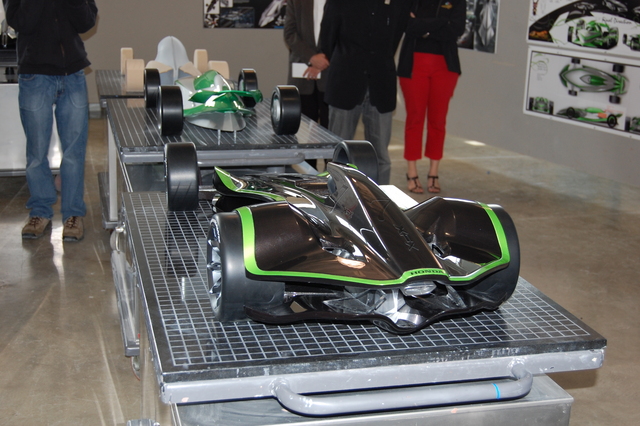
IndyCar’s New Control Strategy: Elevating Event Management for Success
IndyCar, America’s premier open-wheel racing series, is stepping into a new era that aims to elevate the way it manages its events. If you’ve ever been to a live race or watched one on TV, you know how thrilling they can be – the roar of the engines, the speed of the cars, and the excitement of rivalry on the track. But behind those incredible scenes lies a lot of hard work and strategy. Since 2020, under Penske Entertainment’s management, IndyCar has taken some big steps to improve its event management. Let’s dive into what this means for the series, the teams, the fans, and even the sponsors.
A New Approach to Events
In the past, IndyCar didn’t have full control over many of its races. This meant that they relied on outside promoters who sometimes struggled to put on a successful event. Imagine if you were in charge of planning a big party but had to hire someone else to do the planning for you. If they didn’t execute it well, the party could end up boring, unorganized, or even not very fun at all. That’s a similar challenge that IndyCar faced. Some events were not getting enough attendees, and it was hurting the series’ reputation.
Recognizing these challenges, the management at IndyCar decided something had to change. By directly promoting more than half of its races, including big names like the Indianapolis 500 – which is one of the most famous races in the world – IndyCar is taking control back into its own hands. This isn’t just about creating a better show for the fans. It’s also about building a stronger, more recognizable brand.
The Power of Control
When a brand like IndyCar takes control of its events, it can tailor every aspect to fit its mission and values. This means they can create a more unified experience for fans. Think about it – if you go to a theme park, the experience is carefully crafted so that every ride you go on and every area you visit feels connected. That coherence adds to the excitement and enjoyment. IndyCar wants to do the same for race fans.
With the newfound control, they can reinforce their brand identity and foster loyalty among fans. Imagine being a loyal fan who attends races every year. If you consistently have great experiences with well-managed events, you’re more likely to keep coming back year after year. This loyalty is crucial for the future of IndyCar because, as it grows, so does its community of fans.
Investing in Success
Another significant benefit of this strategy is how it can help IndyCar leverage its extensive sponsor network. Just like any successful business, sports leagues rely heavily on sponsors for financial support. By managing events directly, IndyCar can offer sponsors better opportunities for engagement. For instance, at a race, sponsors could set up booths to interact with fans, create contests, or even offer exclusive merchandise. These experiences not only enhance the event but also build a stronger relationship between the sponsors and the fans.
When IndyCar shows sponsors that it can create successful, well-attended events, it becomes easier to secure more investments. If you think about a company investing in advertising, they want to ensure they get more than what they put in. This strategy can help IndyCar become a more appealing option for sponsors looking to maximize their returns.
Learning from the Past
IndyCar’s management didn’t just wake up one day and decide to take control. They learned from their past mistakes and successes. For example, take a look at the revitalization of the Iowa race. Years ago, this event faced challenges that threatened its existence. But with a concentrated effort by the IndyCar team and strategic planning, they turned things around. The result? A race that people looked forward to attending.
This example teaches us a valuable lesson about resilience and the importance of adaptability. Just because a race might not go as planned one year doesn’t mean you should give up. Instead, you analyze what went wrong, adapt, and improve upon it for the future.
Exploring New Markets
One of the most exciting aspects of IndyCar’s new strategy is its focus on exploring new markets. This could mean bringing the thrill of IndyCar racing to different cities across the United States and possibly even international locations. Imagine the excitement of fans in countries where racing might not be as prevalent. For them, it would be a completely new experience!
But why is this important? Expanding into new markets helps IndyCar reach a wider audience and attract new fans. Racing has a rich history in various cultures, and introducing IndyCar in new places can inspire people to become fans and join the community. And who knows? Maybe one day, you could attend a race in a city you’ve always wanted to visit!
The Future is Bright
In summary, IndyCar’s proactive management strategy positions the series for continued growth and improvement in fan experiences. As they control more of their events, they can ensure that every race is an unforgettable experience. It allows them to connect with their audience on a deeper level and engage sponsors in creative, meaningful ways.
For fans, this means races that are not only exciting on the track but also well-organized and filled with great experiences off the track. It’s an exciting time to be an IndyCar fan! As these changes take place, it will be interesting to see how they impact attendance, sponsorships, and the overall culture of racing.
Your Thoughts?
So, what do you think about IndyCar’s new strategy? Do you think taking control of event management will lead to better races and experiences for fans? Or do you feel that relying on external promoters could sometimes be more beneficial? Share your thoughts in the comments below! Your opinions matter and could spark a great discussion about the future of IndyCar racing!




